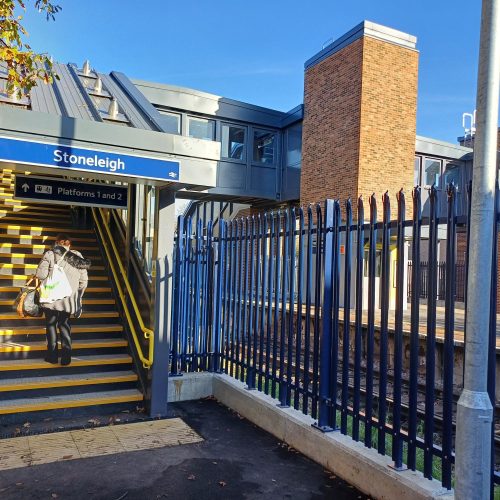Access for All (AfA) represents a substantial investment in making the rail network more accessible and welcoming for people with reduced mobility. Whether it’s full step-free access to platforms or modifications to lighting, signage, layout and facilities, the focus tends to be on what happens inside the station.
This is understandable. Adapting a station that’s over 100 years old to meet modern needs is never a simple or inexpensive task. But access from the station entrance to the platform is just one part of an individual’s journey.
How somebody arrives at the station premises and transfers from one transport mode to another is another significant issue – if you’re that person. Bus stops and car parks that serve stations in town and city centres might not be part of the station estate but are still key links in the chain.
Creating a comprehensive Station Travel Plan involves a wider group of stakeholders including local authorities, bus companies, TOCs and community groups.
Accessible Drop-Off Zones
Ideally there would always be a clearly marked drop-off zone right by the station entrance, with level well-lit and well-signed access, gentle slopes and tactile paving. Where this isn’t possible, people need clear information about the facilities available to help them plan the whole of their journey.
Similarly, bus stops serving AfA stations should allow level access either through raised pavements or humps. Clear signage and good lighting are as important outside the station as inside it.
Practical questions include whether there’s enough space to safely manoeuvre a wheelchair from a car and through the drop-off area to the station entrance – even at peak times. Sometimes, all we can do is help to identify the necessary improvements as the modifications needed may be outside the AfA boundary.
Pushing the Boundary
Our role in an AfA scheme is dictated by the contract which, although on some projects includes station adjacent accessibility work, typically encompasses working within and immediately outside the station.
We’re only doing part of the job if we fail to consider how people arrive at and depart from the station in the first place, so where feasible, try to identify additional accessibility enhancements that can be incorporated into a project’s scope or considered for future enhancement schemes. We can’t deliver all of the solutions needed on our own, but we’re always happy to instigate and contribute to the collaborative process that can deliver simpler, end-to-end journeys.
Sign up to access our AfA Resource Centre below.
Access Our Resource Centre
By signing up, you’ll gain access to our resource hub, designed to support rail operators, designers and project teams in delivering successful Access for All (AfA) projects.
Access valuable resources, including:
- Proven Practices: Practical guides on AfA project management to improve efficiency, reduce costs and achieve sustainable outcomes.
- Regulatory Guidance: Clear insights into compliance requirements to ensure your projects meet the highest standards of accessibility and safety.
- InnovateUK Report Summary: Detailed findings on the future of accessible and inclusive rail travel in the UK.
- House of Commons Report Overview: An overview of the legislative framework for AfA, including its alignment with the Equality Act 2010.
Sign up today to access these essential resources—completely free.

